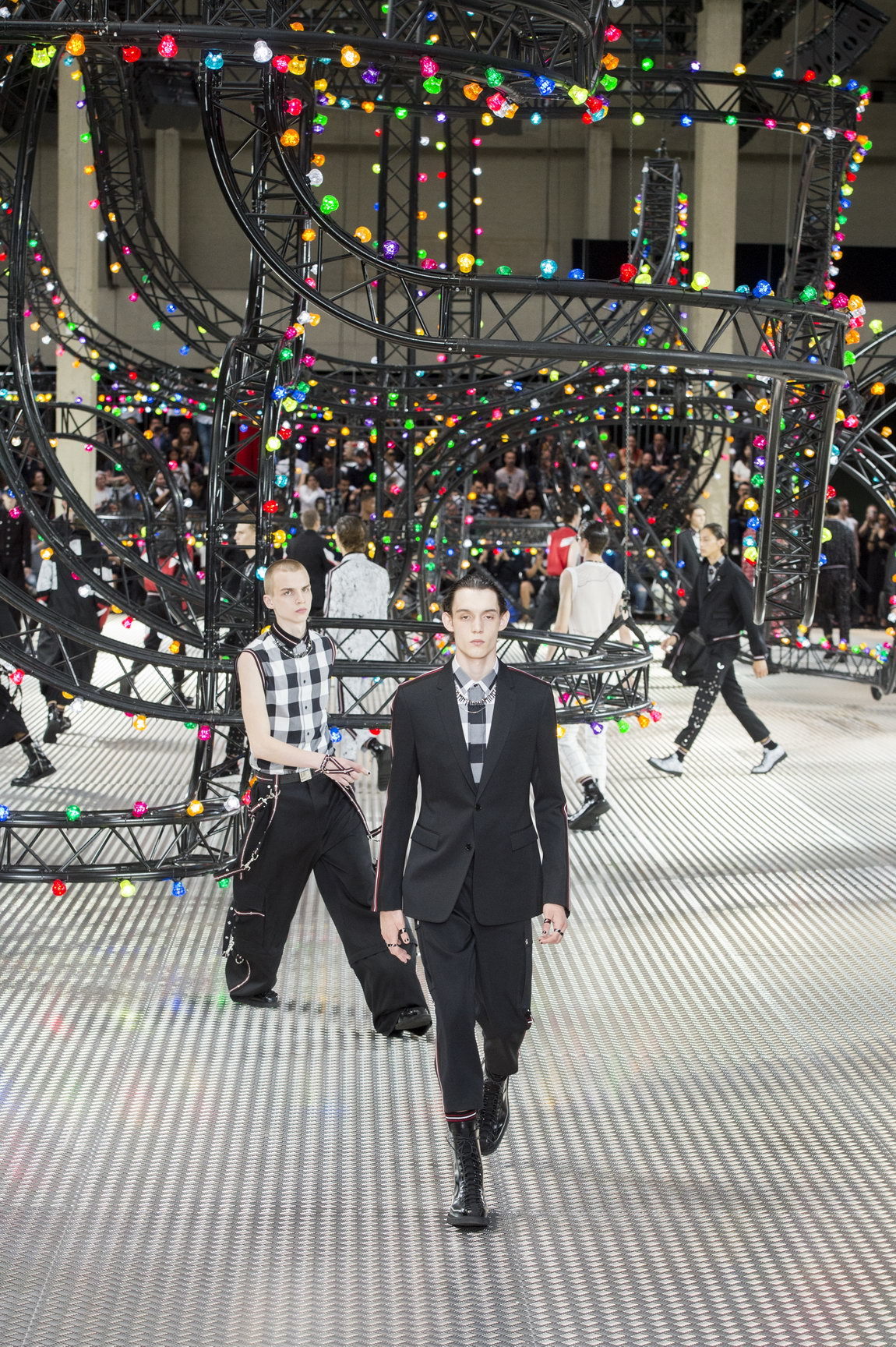They couldn’t have anticipated it, but on the Saturday of spring/summer 17 men’s shows in Paris it was as if designers rallied to lift up a fashion week mood, which hit an all-time low this week as Brexit became a reality. The British press, normally so jolly, entered every show as if they were going to a funeral. Whenever you spoke to the Americans, the message was just as bleak: “We’ve got Trump to deal with.” History is repeating itself in the Western world and you don’t have to dig deep to find parallels between now and early 1930s’ Depression Germany. “It’s a very difficult period in France, too. They go from one strike to the other. There’s not a lot of fun going on,” Kris Van Assche said after his Dior Homme show, fashioned like a fun fair. The message was simple: optimism breeds good things — and right now there’s not a lot of it in the air. A throwback to his youth at the Royal Academy in Antwerp when all the 80s’ kids — high on New Wave and New Romanticism — would hit the Sinksenfoor fun fair for a dash of everyday escapism, it was a personal frame of reference. “It brings back good memories of these tough kids — or kids trying to be tough — but having fun and out in a summer mood,” he said.
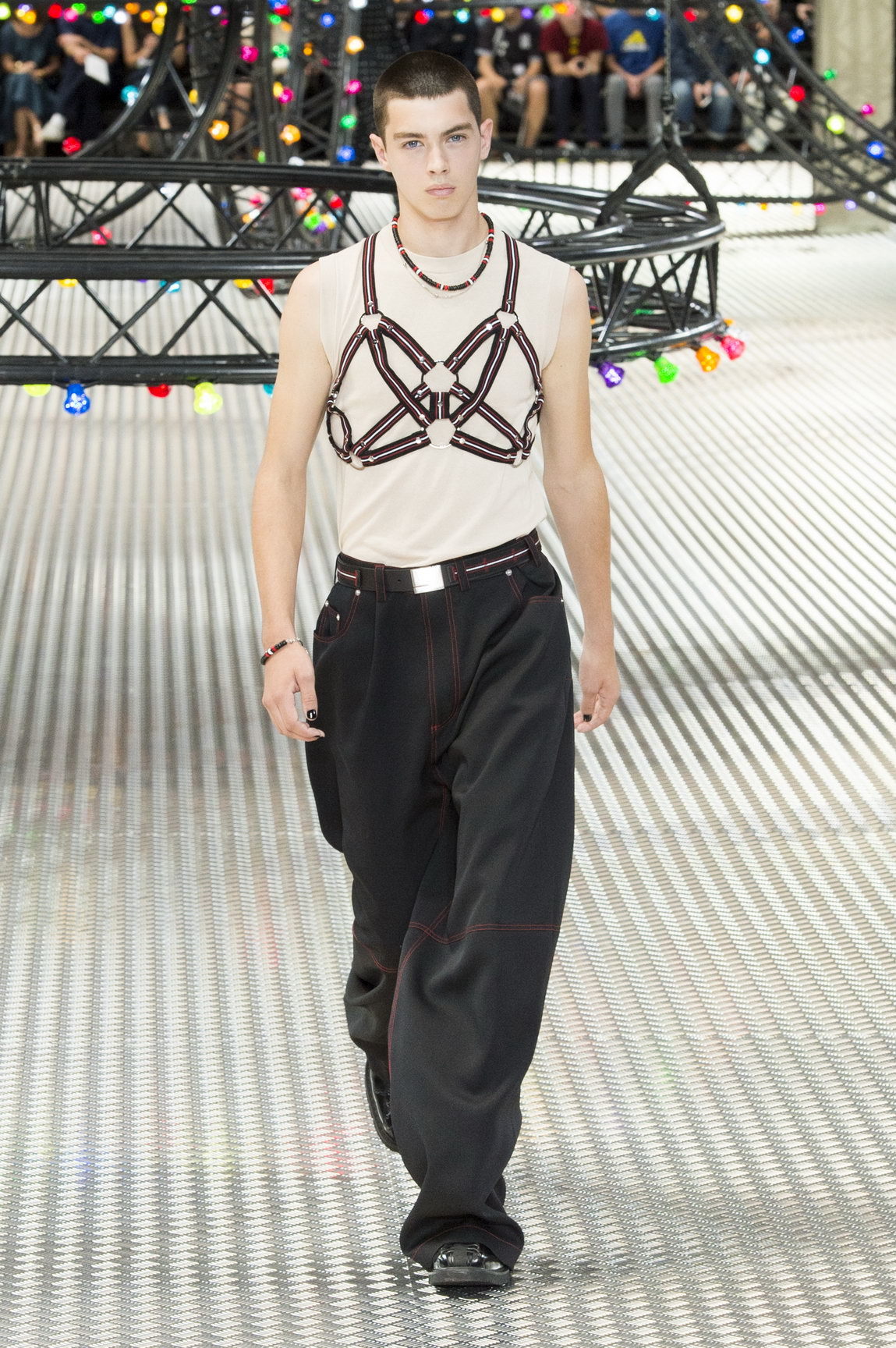
Punk and goth influences lend themselves well to Van Assche’s light and romantic aesthetics, and although his sentiment may have been the opposite, a little toughness looked good at Dior Homme. “We should all have more fun. Everything is so negative and so dark, and this collection had a lot of black but it was not dark. Romantic, maybe, but not dark,” he pointed out. It materialized in punked-up tailoring — some super skinny, some very baggy — which got the sportswear treatment and was met by graphic and quite gritty elements such as netting and heavy string details, and modernist geometric patterns. “I really don’t feel the need today to put out a classic suit on a catwalk. I mean, everyone knows we make a nice suit at Dior. We know how to do that. It’s about showing new proportions, new ways of wearing the jacket: with shorts, without sleeves, with punk stitching, with jogging pants. It’s a lot of new propositions, to give it some realness. I’m not so nostalgic about a classic suit,” Van Assche shrugged. He insisted the show’s background didn’t come from a place of nostalgia either, instead emphasizing the relevance of those poor 80s today.
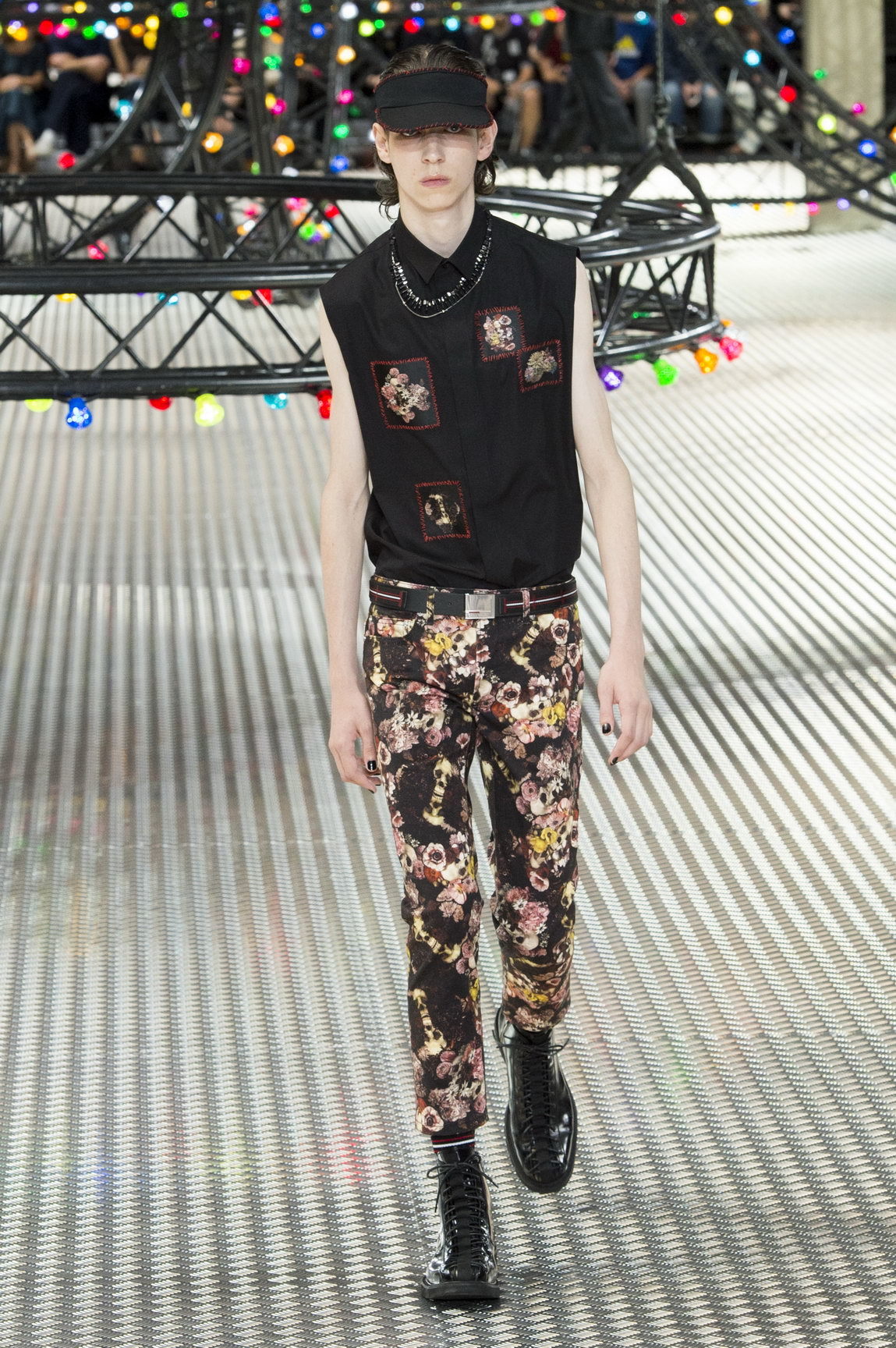
“It’s also radically today — that’s the whole idea of it. It’s not just about taking an 80s’ reference and putting that on a stick today.” He didn’t get politically specific about his parallels, but the collection easily spoke for itself. “If you got an energy from this show that’s exactly the idea,” he said, touching on the other big debate of this men’s season where press and buyers are discussing the future of the men’s shows in a fashion climate where brands such as Gucci, Burberry, Bottega Veneta, and Vivienne Westwood will soon be folding their men’s shows into their women’s shows. “There is no way that menswear is not important or not relevant, or men’s fashion week would not be important. I think it’s kind of a weird stepping back in time, which is perhaps the mood of the moment. But menswear has never been more relevant and therefore men’s fashion week has never been more relevant,” Van Assche said. As totally separate entities with separate designers and ateliers, the women’s and men’s Dior lines are the industry’s best example of a house for which a co-ed fashion week could never work. “And on a personal note,” he said, “I like boys to be boys. What is right for certain other brands is fine, but there’s another reality here.”

At Kenzo, Carol Lim and Humberto Leon shifted up the mood of global fellowship, which has dominated their past many shows, in favor of the universal message of fun. It was a tribute to American nightlife culture of the late 80s and early 90s, with all the volume it could take — in tailoring as well as on the sound system. After pledging their support to Bernie Sanders at their women’s show in March, the designers got decidedly un-political, echoing Van Assche’s sentiment that now is a time for good spirits. You could say it’s sticking your head in the bush, but perhaps there’s something to be said for curing pessimism with optimism. Either way, if the forced fun going on in menswear this season seems like escapism, it’s loomed over by a political reality so heavy that it could never be blinding. Not even at sparkly Balmain where Olivier Rousteing presented his jazzed up idea of workingman’s denim, and got down and dirty with a gladiator theme that was made for his fierce and ferocious universe: his Balmain Army, which included guest appearances by Alessandra Ambrosio and Baptiste Giabiconi. “All you need is love,” the Beatles sang on the soundtrack to the Hermès show that followed, and no statement could have rung out a politically loaded Saturday of shows more appropriately. And if the love happens to come with a few of Véronique Nichanian’s luxe leather cardigans and super lightweight zipped tops, who’s anyone to say no?
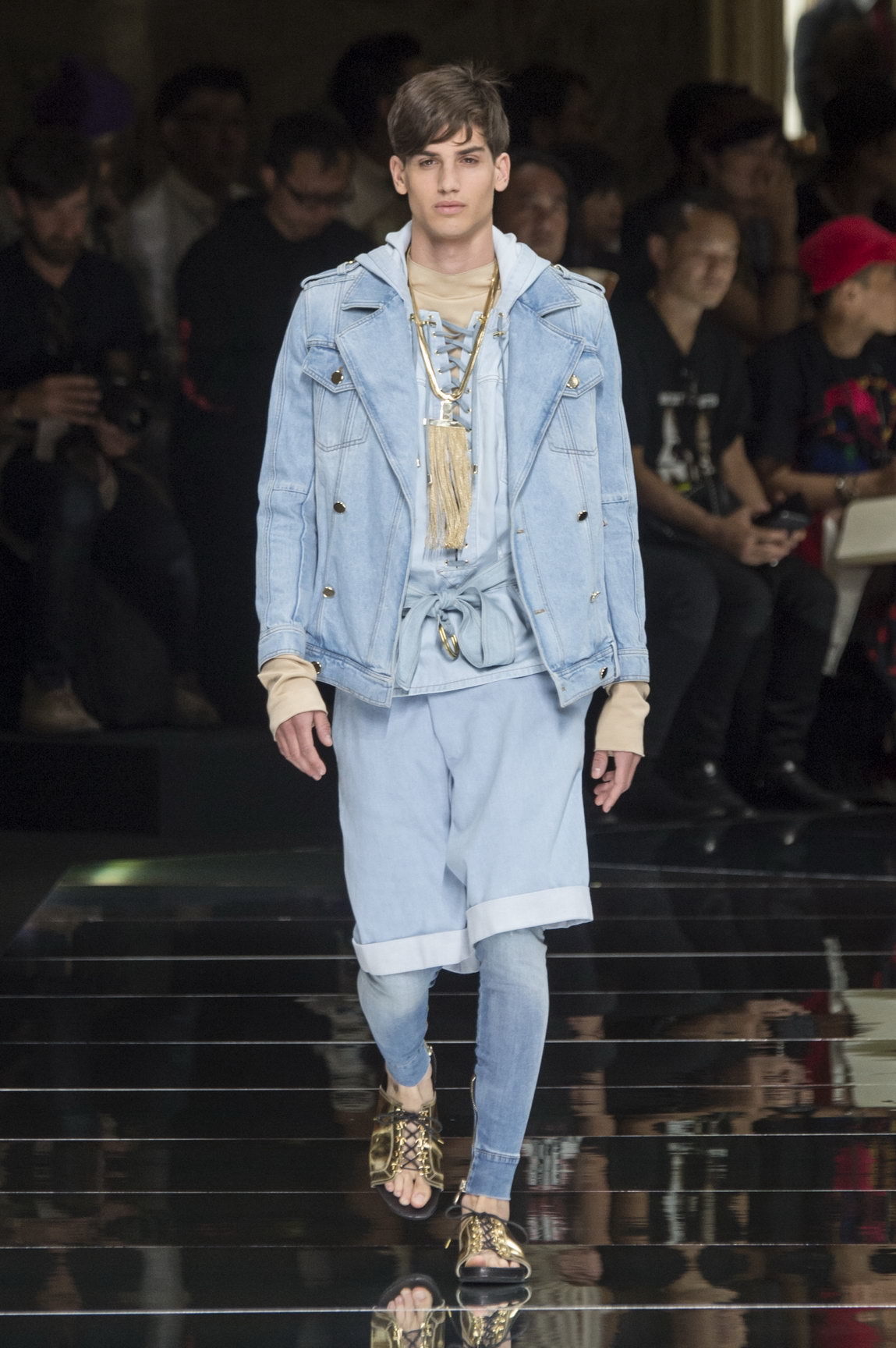
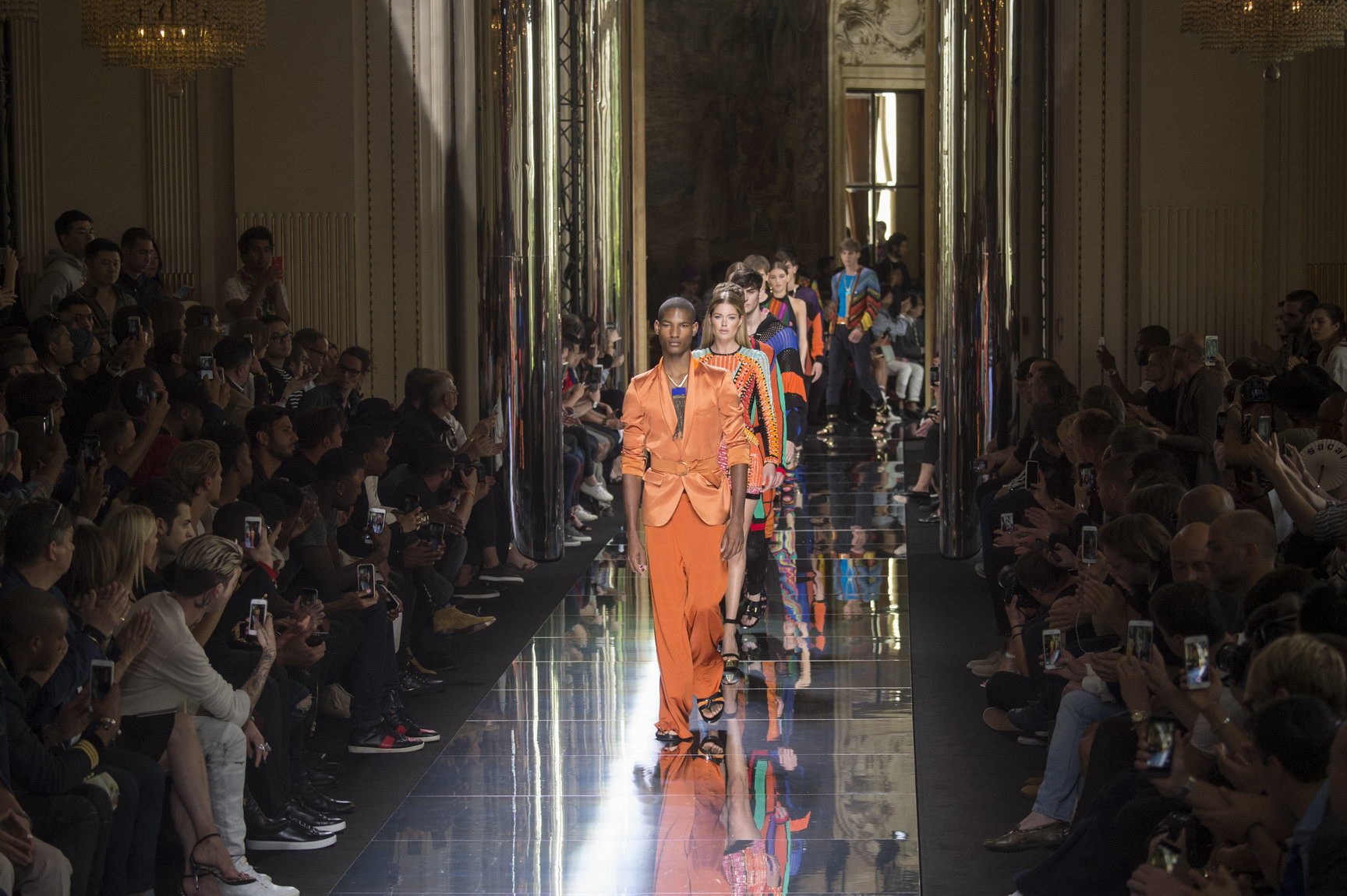
Credits
Text Anders Christian Madsen
Photography Mitchell Sams
